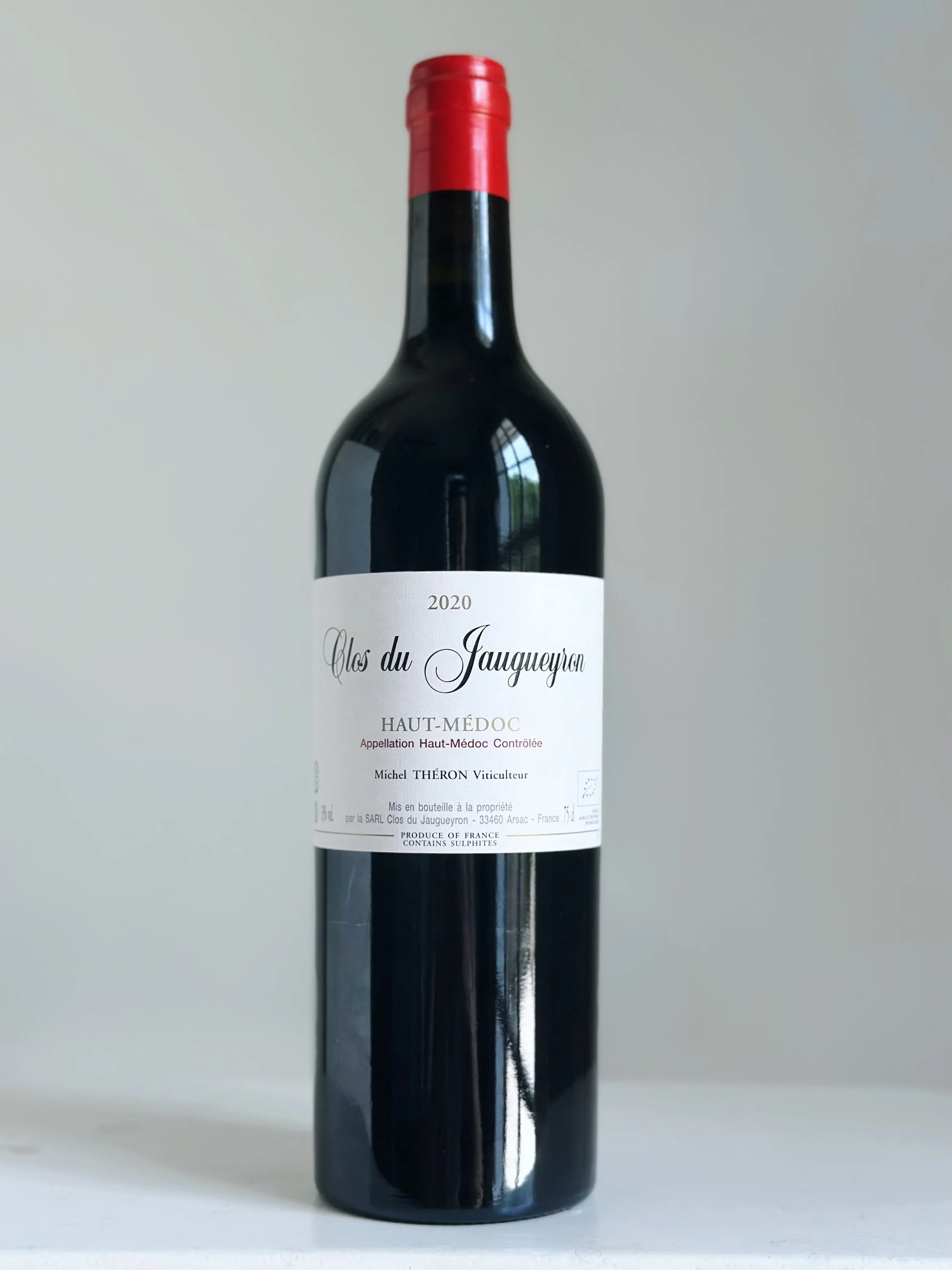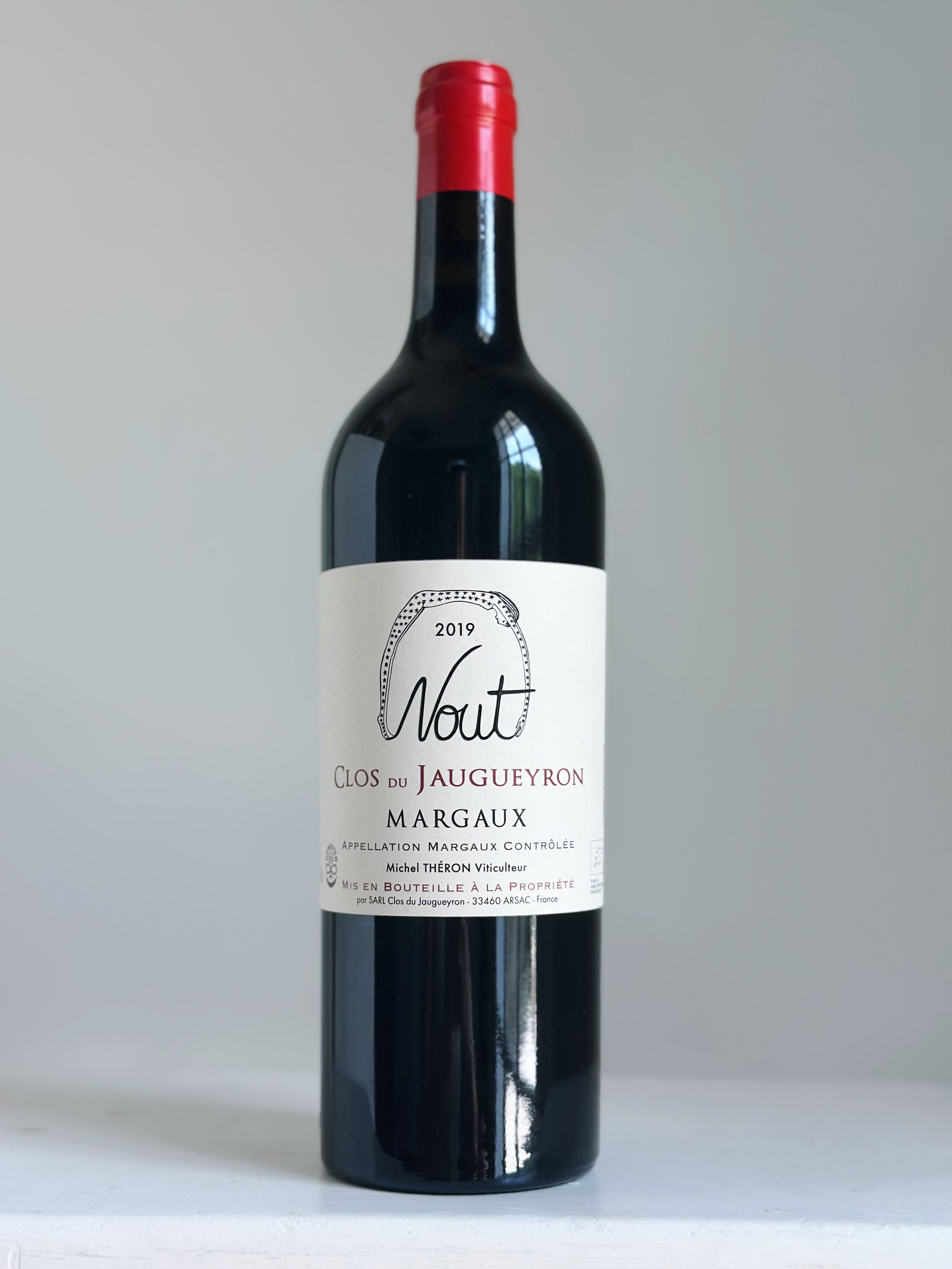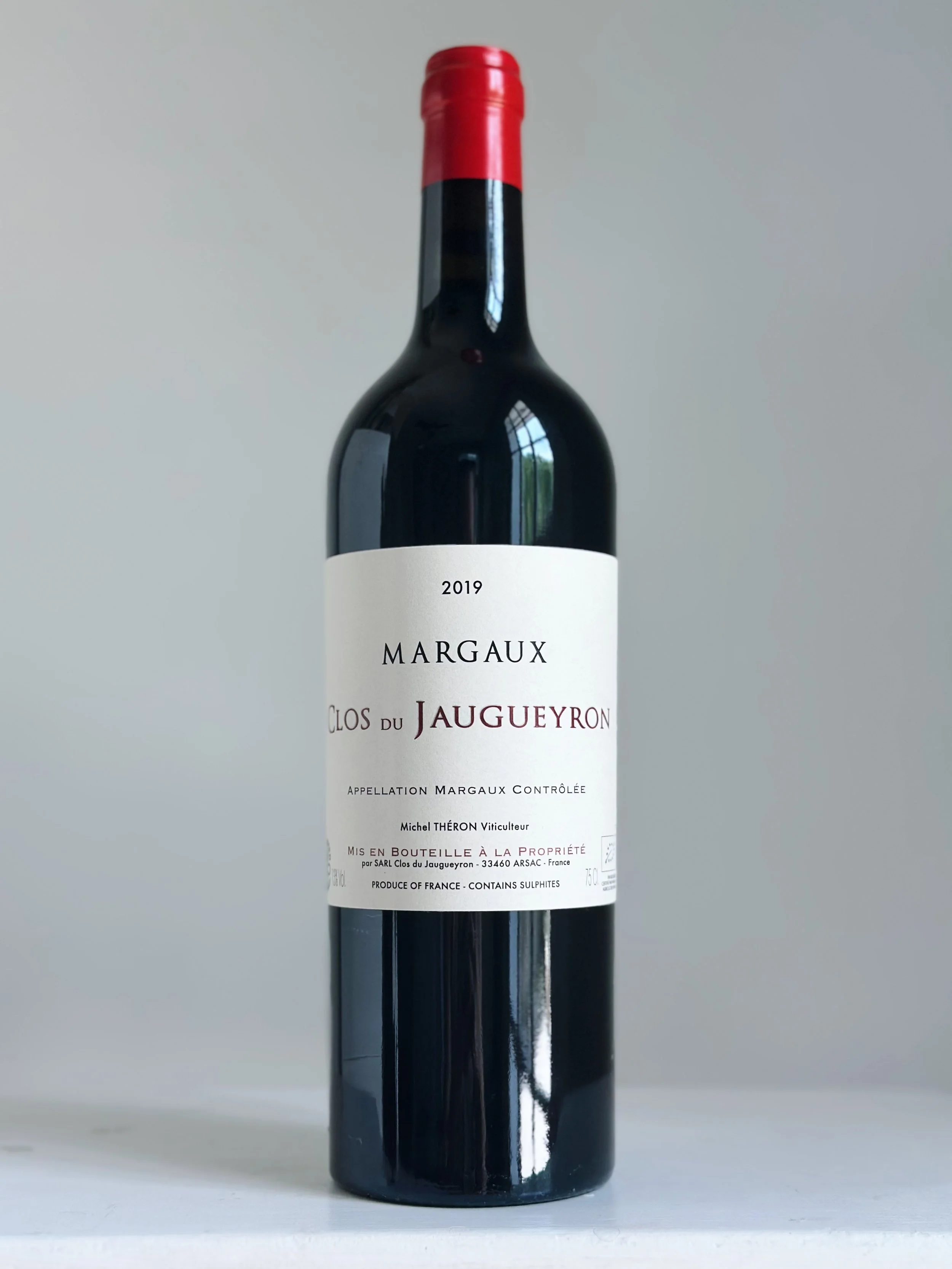Bordeaux. It’s a vast, historic, lauded place whose classifications, regulations, fancy labels and posh exterior can distract from the real work that’s being done here. But the secret of Bordeaux is simple: it does, in fact, make show-stopping, hand-crafted wines. You just have to peek behind the curtain to find the ones doing it.
Clos du Jaugueyron had been on our radar for years, and has been leading the charge in holistic farming and small lot, hands-off winemaking in recent decades. Vigneron, Michel Théron’s reputation proceeds him; he’s a renowned viticulturist from Minervois (southwest France) who set up shop in Bordeaux over 20 years ago with his wife, Stéphanie Destruhaut. The two met at the winemaking school in Bordeaux in the late 1980s, and their first vintage was in 1994 from a parcel they had purchased the year before. Since then, they’ve spent their years honing their craft, leaning into holistic farming and crafting wines that are soulful and expressive interpretations of their region.
“Clos du Jaugueyron is one of my favorite small Bordeaux estates. Its proprietor, Michel Théron, farms about 17 acres biodynamically, and his wines are deliciously pure.”
Best known for his commitment to biodynamics, Michel’s belief in observation – getting to know and listening to the vines to understand how to help them express terroir – has earned him serious clout and respect the wine world over. The resulting quality of these wines is apparent. Electric and approachable in their youth, the very small portfolio of Clos du Jaugueyron offers absolutely pure expressions of Left Bank Bordeaux, and exemplifies the lesser-known, yet still classic wines being produced outside of Bordeaux’s 1855 Classification System.
Each wine is made from a single vineyard, and these vineyards lie in the Haut-Médoc and Margaux appellations (see below), planted to Cabernet Sauvignon, Merlot, Petit Verdot, Cabernet Franc and Carmenère – about 17 acres across three distinctive sites. They’re carefully hand-tended by Michel, including gentle ploughing under the vines, proactive biodynamic preparations, and care to preserve the natural ecosystems around the vineyards. Synthetic sprays have never been used on the Jaugueyron sites, and Michel and Stéphanie officially converted to Demeter Certified biodynamics in 2008. Bordeaux is a maritime climate, so this level of holistic farming can be particularly tricky, but the couple have seen the benefits in the resiliency of the vines during years of stress… noting the overall quality of the wine as a direct result of the care they take.
In the cellar, wines are simply guided. Grapes are hand-picked, and macerate and ferment in concrete of different sizes to accommodate smaller and larger single-block picks. These concrete fermenters are used to retain the purity of the wine through spontaneous fermentation, and the resulting wines age quietly in carefully selected French oak barrels for a minimum of 12 months (no racking, and minimal to no top-ups). Only tiny amounts of sulphur are added at bottling – no other additions or adjustments are made in the entire process. Jaugueyron makes less than 2,000 cases annually.
In the end, Michel and Stéphanie are crafting Cabernet-based wines that demonstrate an old-school (fresher) expression of Cab… it’s lifted, expressive, radiant Bordeaux that is very difficult to find these days. It’s one that, when we finally had the opportunity to try for ourselves, we knew we wanted to share far and wide. We are so humbled and excited to welcome Michel, Stéph and the Clos du Jaugueyron wines to The Road!
Currently Available from Clos du Jaugueyron
Clos du Jaugueyron: In the Vineyards
The Jaugueyron three vineyards (delineated into 16 distinctive plots) total 7ha (17 acres) in the Haut-Médoc and Margaux appellations. They’re carefully farmed by Michel Théron, who has never used chemical sprays on these sites – they’ve been Demeter-Certified biodynamic since 2008.
Macau (Haut-Médoc AOC)
Macau is the village located on the southern shores of the confluence of the Garonne and Dordogne rivers, which define the geology and geography of the Bordeaux region. Here, Michel and Stéphanie own and farm 3.35ha with vines that are on average 19 years old. There’s 53% Cabernet Sauvignon, 40% Merlot and 7% Petit Verdot planted here, which benefit from the very fine gravel and well-draining sand that define this region. During summer, the gravel heats up quickly, ensuring early grape maturity and power. These grapes bring a more mineral-driven quality.
Arsac (Margaux AOC) – lieut-dit Le Tertre
The village of Arsac lies west of Macau; vineyards here have more of a clay and sand subsoil, with some gradient to gravelly, quartz-pebbly blocks. This is where the Jaugueyron lieut-dit called Le Tertre (meaning “the mound” or “the hill”) is planted, and its fruit goes into the Margaux cuvée called Nout. Le Tertre is planted to 55% Merlot and 45% Cabernet Sauvignon, with an average vine age of 29 years. Fruit is picked here through multiple passes, ensuring that each variety is harvested with the perfect balance of freshness and ripeness. “Nout” (or in English, “Nut”) is the Egyptian goddess of the sky and the stars – a nod to the mythical figure that presides over the cosmos, which guide the biodynamic calendar.
Arsac (Margaux AOC) – Clos du Jaugueyron
Also in the village of Arsac, the Clos du Jaugueyron is the top vineyard that produces grapes for Michel and Stéphanie’s flagship wine. It’s 3.75ha (just over 9 acres) planted to 70% Cabernet Sauvignon, 20% Merlot and 10% Cabernet Franc that are also an average of 29 years old. It’s a very gravelly site, with a long maturation window that produces fruit of great depth. Picks are done later here, through many passes and with sorting in the vineyard if necessary. This is also the only Jaugueyron site with Cabernet Franc.
Regional Spotlight: Bordeaux
The name Bordeaux is derived from bord de l’eau (Basque for “along the water”) and illustrates the region’s long and complex history as a port of trade. Inhabited as early as the 1st Century BC, it wasn’t until the 12th Century CE, when the Duchess of Aquitaine married the future King of England, that Bordeaux began its ties with England that made the wine region so famous. British royal taste for early Bordeaux solidified the illustrious reputation of these wines, and the region’s rapid development and export market was, in large part, because of the proximity of the vineyards to the port from which the wines would be transported. Investment in the growth of the city of Bordeaux mirrored this early development: nearly a millennium later, it became a UNESCO World Heritage Site status in 2007.
Bordeaux is the birthplace of grape varieties like Cabernet Franc, Sauvignon Blanc, Cabernet Sauvignon (which is a cross between Cab. Franc x Sauv. Blanc), Merlot, Petit Verdot and Malbec. It’s from here that international winemakers, eager to capitalize on the notoriety of some of these most popular varieties, took clippings and planted them in countries like Australia, New Zealand, Chile, Argentina, Canada… the list goes across the world. And some of those countries have since created their own thumbprint with these varieties (Marlborough Sauvignon Blanc, anyone?!). Back in Bordeaux the most sought-after sub-regions, whose vineyards lay along the Left (west) and Right (east) Banks of the Gironde river, became synonymous with quality: St. Éstephe, St. Julien, Paulliac, Margaux, Pomerol, St. Émilion…
Clos du Jaugueyron is based in the famed Margaux sub-appellation, and is a real bellweather for quality wines that exist outside of Bordeaux’s 1855 Classification system.



